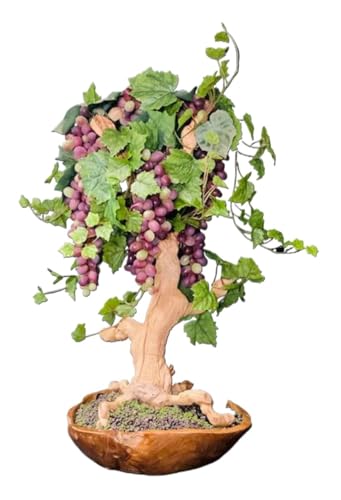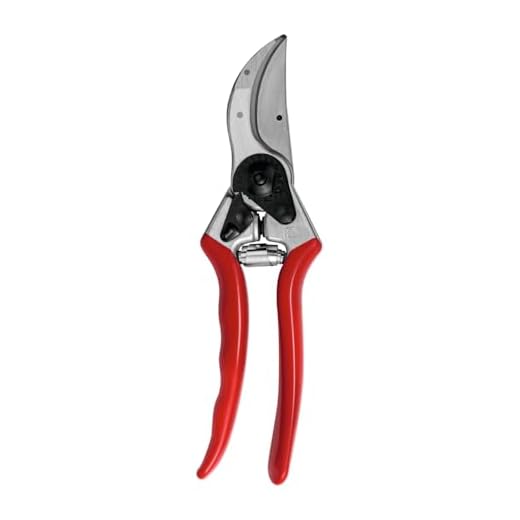








Bonsai is the art of growing miniature trees in containers, and grape bonsai is a unique and beautiful variation of this art form. While grape bonsai may require more specialized care compared to other types of bonsai, the end result is truly rewarding. With its delicate vines and juicy fruits, a grape bonsai can bring a touch of nature’s beauty into your home or garden.
To start making your own grape bonsai, you will need a young grapevine cutting that is suitable for bonsai cultivation. Look for a variety that is known for its small leaves and compact growth. Once you have obtained a cutting, trim the roots and repot it in a shallow bonsai container filled with well-draining soil.
Next, it’s time to shape your grape bonsai. This is done through careful pruning and training of the vine. Use bonsai wire to wrap around the branches and gently guide them in the direction you desire. Remember to prune the vine regularly to maintain its shape and encourage budding of new leaves and fruits.
Proper care is essential for the health and growth of your grape bonsai. It requires regular watering, but be sure not to overwater as grapevines prefer slightly drier conditions. Additionally, provide adequate sunlight for your bonsai by placing it in a spot that receives at least 6 hours of direct sunlight each day. Lastly, fertilize your grape bonsai during the growing season to promote healthy growth.
In conclusion, creating a grape bonsai can be a wonderful and fulfilling experience. With patience, care, and attention to detail, you can transform a simple grapevine cutting into a stunning miniature tree. So why not give it a try and bring the beauty of a grape bonsai into your home or garden?
Choosing the Right Grape Variety
When it comes to making a grape bonsai, choosing the right variety of grape is essential. Not all grape varieties are suitable for bonsai cultivation, so it’s important to select a variety that will thrive in a bonsai environment.
Here are a few grape varieties that are well-suited for bonsai:
| Variety | Description |
|---|---|
| Black Hamburg | A popular variety that produces sweet, juicy grapes. It is known for its vigorous growth and resistance to diseases. |
| Thompson Seedless | An excellent variety for bonsai cultivation. It has a compact growth habit and produces seedless grapes that are perfect for snacking. |
| Alicante Bouschet | This variety is known for its dark-colored grapes. It has a strong growth habit and can easily be trained into different bonsai styles. |
| Muscat of Alexandria | A fragrant variety with large, juicy grapes. It is a vigorous grower and can create a stunning bonsai with its long vines. |
These are just a few examples of grape varieties that are suitable for bonsai cultivation. When choosing a variety, consider factors such as the climate in your area, the size of your bonsai container, and your desired aesthetic. With the right grape variety, you can create a beautiful and fruitful bonsai grape tree.
Preparing the Bonsai Pot
Before you begin the process of creating a grape bonsai, it is important to have a proper bonsai pot. The pot you choose should not only be aesthetically pleasing but also practical for the proper growth and development of your bonsai tree. Follow these steps to prepare the bonsai pot:
-
Selecting the right pot:
Choose a pot that is proportional to the size of your grape bonsai tree. The pot should have drainage holes to prevent waterlogging and provide suitable drainage. Additionally, consider the color and material of the pot to complement the overall appearance of your bonsai.
-
Cleaning the pot:
Thoroughly clean the pot before using it for your grape bonsai. Remove any dirt and debris from the surface and rinse it with water. Avoid using harsh cleaning agents that could harm the tree.
-
Preparing the bottom drainage layer:
Add a layer of coarse gravel or small rocks at the bottom of the pot to enhance drainage and prevent water accumulation. This layer will help create a suitable environment for the roots of your grape bonsai tree.
-
Applying the drainage mesh:
Place a piece of drainage mesh over the gravel layer to prevent the soil from seeping through the drainage holes. The mesh should be large enough to cover the entire bottom of the pot.
Top Rated50-Pack Heavy Duty Net PotsPerfect for hydroponic systemsThese high-quality 5-inch mesh pots provide excellent drainage and airflow, promoting healthy root growth for your plants. Ideal for hydroponics and aquaponics, each set includes reflective lids for optimal usage. -
Filling the pot with bonsai soil:
Carefully fill the pot with bonsai soil to create a stable and nutrient-rich environment for your grape bonsai tree. Use a quality bonsai soil mixture that provides good drainage while retaining moisture.
-
Securing the tree in the pot:
Place your grape bonsai tree in the center of the pot, making sure that the roots are evenly spread. Gently press the soil around the roots to secure the tree in place. Ensure that the tree is positioned at the desired angle for optimal growth.
Once you have prepared the bonsai pot, you are ready to move on to the next steps of creating and maintaining your grape bonsai tree.
Pruning and Shaping Techniques
Pruning and shaping are essential techniques for maintaining the health and appearance of your grape bonsai. Regular pruning helps to control the growth and encourage the development of a compact and balanced tree.
Tools needed:
- Pruning shears: These are used for cutting small branches and twigs.
- Concave cutters: Essential for making clean cuts on larger branches.
- Wire cutters: Used for removing wires during shaping.
- Bonsai rake: Helps to remove excess soil during repotting.
Pruning Steps:
1. Start by removing any dead or diseased branches using the pruning shears. These branches can hinder the growth of the bonsai and should be eliminated.
2. Thin out any crowded areas to allow better air circulation and light penetration. This can be done by selectively pruning branches that are growing too closely together.
3. To shape the bonsai, use the concave cutters to remove any long or unwanted branches. Begin by cutting back the branches to a desirable length and angle. This will help create an aesthetically pleasing form.
Shaping Techniques:
1. Wiring: By using bonsai wire, you can shape and position the branches in the desired direction. Carefully wrap the wire around the branch, making sure not to damage the bark. Once wired, you can gently bend and position the branch as desired.
2. Clip and Grow: This technique involves pruning back branches and then allowing them to grow freely. This encourages the development of new buds and allows you to shape the bonsai over time.
3. Pinching: Pinching the new growth with your fingers is a great way to control the shape and density of the bonsai. By pinching off the growing tips, you can encourage branching and maintain an overall compact appearance.
Remember to regularly check and adjust the wiring to prevent it from cutting into the branches. Additionally, be careful not to over-prune or stress the bonsai, as this can lead to health issues. With consistent pruning and shaping, your grape bonsai will flourish and become a true work of art.
Caring for Your Grape Bonsai
Proper care is crucial to ensure the health and beauty of your grape bonsai. Here are some guidelines to help you take care of your bonsai tree:
- Watering: Regular watering is essential for the health of your grape bonsai. Check the moisture level of the soil regularly and water when it starts to dry out. Avoid overwatering as it can lead to root rot.
- Light: Grape bonsai trees thrive in full sun, so place your bonsai in a location that receives at least six hours of sunlight per day. If you are growing your bonsai indoors, consider using grow lights to provide sufficient light.
- Temperature and Humidity: Grape bonsai trees prefer a moderate climate, with temperatures between 60-80°F (15-27°C). They also appreciate humidity, so misting the foliage with water can help maintain the right moisture level.
- Pruning and Training: Regular pruning is necessary to maintain the shape and size of your grape bonsai. Prune back any unwanted branches and leaves to encourage new growth. Training can be done using wires to guide the branches into the desired shape.
- Fertilization: Fertilize your grape bonsai during the growing season, typically from spring to summer. Use a balanced fertilizer, following the instructions on the package. Avoid over-fertilizing as it can cause salt buildup in the soil.
- Repotting: Grape bonsai trees should be repotted every 2-3 years to ensure healthy root growth. When repotting, trim back some of the roots and replace the soil with fresh bonsai soil mix.
- Pests and Diseases: Keep an eye out for common bonsai pests like aphids, spider mites, and scale insects. Treat infestations with appropriate measures, such as insecticidal soap or horticultural oil. Regularly inspect your bonsai for any signs of diseases and take prompt action if needed.
By following these care instructions, you can enjoy a thriving and beautiful grape bonsai tree for years to come. Remember to observe your bonsai closely and adjust your care routine as needed.
Harvesting and Enjoying Your Crop
Once your grape bonsai tree has grown and matured, it’s time to start harvesting and enjoying the fruits of your labor. Here are some tips on how to harvest and make the most of your grape crop:
1. Timing is Essential
Timing is crucial when it comes to harvesting grapes. The ideal time to harvest will depend on the grape variety and the flavor profile you desire. Generally, grapes are ready to be harvested when they have reached their full color and the sugar content is at its peak. Taste a few grapes regularly to determine the perfect time for harvesting.
2. Gently Pick the Grapes
When harvesting, be gentle with the grapes to avoid damaging the vines and berries. Use a pair of sharp pruning shears or small scissors to snip the grape clusters from the vine carefully. It’s important to leave a short stem attached to the grape cluster to help preserve the fruits.
3. Handle with Care
After harvesting, handle the grapes with care to prevent bruising or crushing. Place them in a shallow container or basket, making sure not to stack the grapes too high. Transport them to a cool and shaded area to keep them fresh and preserve their flavor.
4. Washing and Storing
Before consuming the grapes, rinse them gently under cool running water to remove any dirt or debris. Allow them to air dry or pat them dry with a clean towel. Grapes can be stored in the refrigerator for up to one week, but it’s best to consume them as soon as possible for the freshest flavor.
5. Exploring Grape Recipes
Aside from enjoying grapes as a snack on their own, they can be used in various delicious culinary creations. Consider using your freshly harvested grapes in salads, desserts, jams, or even making your own grape juice or wine. Experiment with different recipes to fully enjoy the flavors of your grape bonsai crop.
By following these tips, you can harvest and enjoy the fruits of your grape bonsai tree. Remember to savor the flavors and be proud of the hard work you’ve put into growing and cultivating your very own grape crop!










